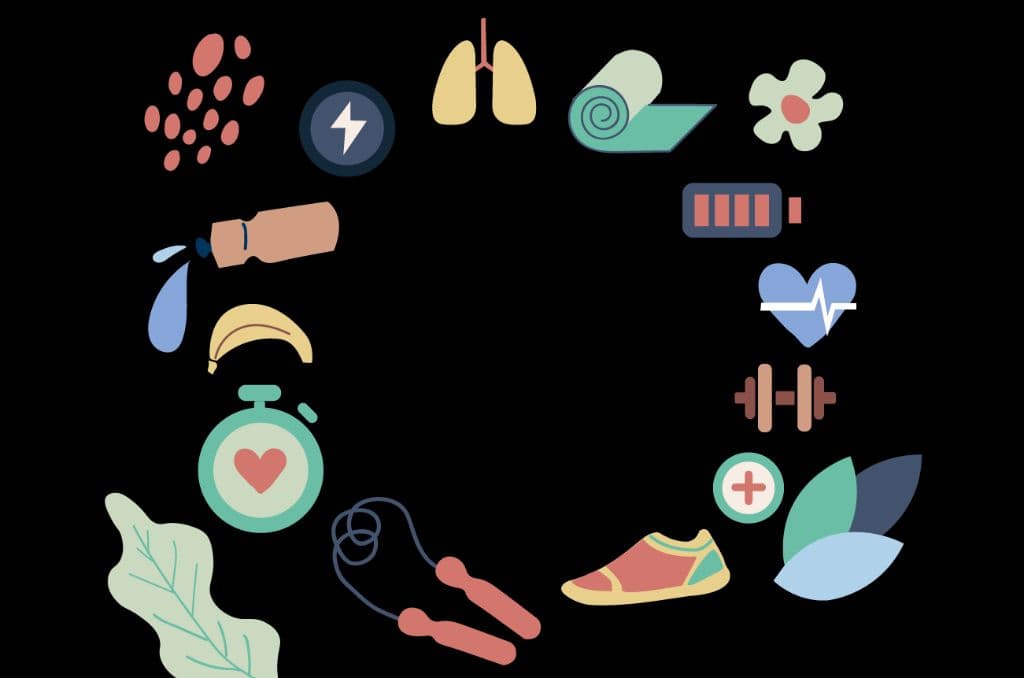This blog is compiled by Athira Krishnan, a content writer for Proactive For Her.
What is the pelvic floor and what is its importance?
The pelvis is the lower part of the torso and is located between the abdomen and the legs. This area provides support for the intestines and also contains the bladder and reproductive organs.
The pelvic floor are muscles that span across the bottom of the pelvis and support the pelvic organs (bladder, bowel and uterus (in women). When pelvic floor muscles are weakened, they can create problems with bladder and bowel control.
These muscles are important because –
- They provide us with the ability to control the release of urine, faeces and flatus and to delay emptying until it is convenient.
- They improve sexual function. Voluntary contractions (squeezing) of the pelvic floor provides sexual sensations and arousal.
- They also provide support for the baby during pregnancy
How do the pelvic floor muscles work?
The urethra (urine tube), anus (back passage) and vagina all pass through the pelvic floor muscles. These muscles normally wrap themselves quite firmly around these tracts, ducts and passages to help keep them shut. Contraction of these muscles lift the organs of the pelvis and tightness the openings of the vagina, anus and urethra. Relaxing the pelvic floor allows the passage of urine and faeces.
This function is especially important if your urethral or anal sphincters (muscles) do not work normally, which may happen in mothers who just gave birth.
What causes dysfunction of the pelvic floor?
Pelvic floor dysfunction is a condition when these muscles lose tone or strength and may result in loss of control over bladder and bowel functions, prolapse of pelvic organs such as the prolapse of the uterus (womb) into the vagina. These conditions may be painful and affect the social, mental and sexual life, thus reducing the overall quality of life. It may also lead to anxiety and depression.
Some of the causes could be –
- Pregnancy and childbirth
- Menopause
- Excessive straining on the toilet during constipation
- Excessive coughing – This could be due to asthma or excessive smoking. This puts undue pressure on the pelvic floor muscles which may gradually become weak
- Heavy lifting – Lifting heavy objects, weights or a toddler with a sudden jerk-like motion or in an incorrect posture is harmful for the back muscles, spine, as well as pelvic floor.
- High impact sports – Sports like netball and volleyball in which both feet are in the air while jumping or leaping and then land on the ground with some strength may cause problems with the pelvic floor
- Ageing – As you age, your muscles tend to lose tone
- Being overweight – The high amount of abdominal fat may put undue pressure on the pelvic floor
- Any kind of trauma or nerve damage
What could be the symptoms of pelvic floor dysfunction?
- Urinary incontinence – the sudden/frequent urge to urinate or painful urination
- Constipation
- Lower back pain
- Pain in the pelvic region, genitals or rectum
- Discomfort during sexual intercourse for women
- Uncomfortable pressure in the pelvic region or rectum
- Muscle spasms in the pelvic region
How does yoga help?
Yoga works on your body by –
- Relaxing and massaging the core muscles and back muscles
- Strengthening and toning the pelvic floor
- Removing any kind of energy blocks and opening up the pelvic base
- Increasing circulation to the abdominal organs and muscles
- Increasing the stability of the pelvis. Since the pelvis is the seat of the spine, its stability creates a safe and stable environment for spinal movement
- Maintaining regular bowel movement
- Relieving mental stress
What are some yoga asanas you can do for your pelvic region?
To treat urinary incontinence –
- Mulabandhasana or Root lock pose -
This asana deals with drawing your root chakra up and in, an act similar to stopping the flow of urine midway. The root chakra or Muladhara is said to be located at the base of your torso or the perineum, which is the area between your anus and genitals. Evidently, it has numerous benefits.
It can be done in any position, such as sitting, lying or standing. But by sitting in Siddhasana, it provides more benefits, because, in the Siddhasana, the heel of the leg is attached to the Muladhara. While practising, keep in mind that the pressure of the heel lies in the anus.
Inhale to the count of 5 while contracting your pelvic floor, hold for 5-10 comfortable seconds. Slowly exhale to the count of 5 while relaxing the pelvic muscles.
To tone your pelvic floor -
- Marjaryasana-Bitilasana or Cat cow pose
- Start on your hands and knees with your wrists directly under your shoulders, shoulder-width apart and your knees directly under your hips, hip-width apart. Centre your head in a neutral position
- Begin by moving into the cow pose - Inhale and slowly drop your belly towards the floor. Lift your chin and chest and look up towards the ceiling
- Next, move into the cat pose - Exhale and draw your belly in towards your spine and look downwards
- Inhale, coming back into the cow pose and exhale into the cat pose
- Try and repeat this 5-20 times, based on your level of comfort and then rest by sitting back on your heels with your torso upright.
- Adhomukha asana or Downward facing dog pose
- Start on all fours with your knees under your hips and your palms under your shoulders. From here, move your hands about one palm length forward.
- Exhale and gently press down on your hands and lift your hips up to come into the pose. Initially keep your knees bent and remember that the goal of this pose is to lengthen your spine
- Now slowly begin to straighten your legs until your knees and legs are straight. Try to keep your heels on the floor, if possible.
- To release, exhale, bend your knees and slowly return to all fours.
- Plank pose
- Start on all fours with your arms directly under your shoulders, shoulder-width apart.
- Next. slowly extend your legs until only your toes are touching the floor. Do make sure that your feet are shoulder-width apart.
- Take care to not curve or bend your back towards the floor or towards the ceiling. Your spine must be straight.
- Hold for 10 seconds and then release. Gradually work up to 60 seconds, based on your comfort level.
Apart from these, the following asanas can be done in addition too -
- Parivrtta Supta Tadasana or Twisting Reclining Mountain Pose
- Eka Pada Setu Bandha Sarvangasana or One-legged bridge pose
- Supta Gomukhasana or Reclining cow face pose
- Chaturanga Dandasana or Four-limbed staff pose
To increase circulation / ease your pelvic pain / relax and soothe
- Supta Baddha Konasana or Reclining Butterfly pose
- Sit with your back straight, your legs stretched out, feet touching each other with your toes pointing upwards
- Now slowly bend your knees and bring your feet towards your pelvis making sure that the soles of your feet are touching. Grab your feet with your hands and make an effort to bring them as close to the genitals as possible
- Once you are comfortable, you may gently lie down and rest your back on the floor. Your arms can rest on your thighs.
- Relax and take 5-10 deep breaths in this position
- Balasana or child’s pose
- Begin by sitting on your heels by either keeping your feet apart or together
- Slowly bend forward and bring your forward to touch the floor, exhaling as you do so.
- Keep your arms beside your body with the palms facing the ceiling.
- Alternatively, you may reach out your arms forwards, palms placed facing down on the floor.
- In this position, gently press your chest onto your thighs
- Try and hold this position for 30-40 seconds. Relax your muscles and gently breathe in and out
- When releasing, inhale and gradually raise your upper body
In addition, the following asanas may also be done, according to your requirement
- Utkatasana or Chair pose
- Trikonasana or Triangle pose
- Malasana or Squat pose
What can be done in addition to yoga?
The following foods can be consumed to strengthen your pelvic floor
- Bananas and Avocados- they are a rich source of not only Potassium but also Magnesium and Calcium. These minerals are best to ease muscular pain and cramps.
- Omega-3 fat rich fish (salmon, sardine, mackerel), chia seeds, flax seeds, anchovies, are known to benefit in muscle fatigue and cramps.
- Eggs- are a rich source of proteins and amino acids like Taurine which is essential for muscle strength and muscle healing.
- Also, drink plenty of water as it will hydrate your body and flush out toxins, thus keeping your colon intact. Dehydration can lead to bowel dysfunction, primarily constipation, and this can contribute to a weakened pelvic floor, Ideally, it is recommended to drink alkaline water (add lemon) due to its superior benefits.
- Try and avoid caffeine and carbonated drinks.
- Take care to not push or strain excessively while using the toilet.
- Take warm baths or use hot water bottle compression in the site of pain.
In conclusion - Yoga is known to have numerous benefits on both the body and the mind. Problems with the pelvic floor tend to arise in some cases after pregnancy, during or post-menopause. A nutrient and mineral rich diet coupled with a regular yoga practise will not only keep pelvic dysfunctions at bay, but also iadd to your sex life. It also will strengthen the pelvis and improve self-confidence.
Disclaimer - This information is provided for educational purposes and should not be construed as medical advice. Please consult with your healthcare practitioners before undertaking any changes in your diet or adding supplements.
Proactive is a digital clinic for women, offering accessible, personalized, and confidential healthcare solutions. We offer products and services for out-patient health concerns of Indian women, across their lifetime - from puberty to pregnancy to menopause. To know more on the sexual and reproductive health of women, visit https://www.proactiveforher.com/

